Fishing may seem complicated to first-time anglers, but that doesn’t have to be the case. With just a bit of gear, a fishing license, and the information in this guide, you’ll be able to get on the water and��try your hand at catching��some fish by this weekend.
This fishing guide specifically covers the spinner method, which uses a rod with a spinning reel and lures or live bait to attract fish. For new anglers, it’s one of the easiest ways to get outside with minimal investment, but fly-fishing, saltwater fishing, ice fishing, and other types of gear fishing that utilize different reels are all options that may interest you down the road.
The Fishing Guide Basics
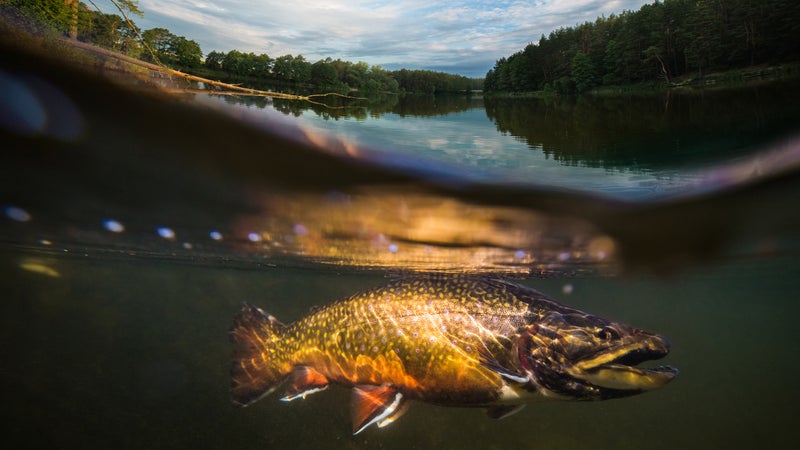
Getting a License
Before you head out, make sure you have a current fishing license for the state you’ll be fishing in. Licenses are sold or at fishing shops and occasionally in convenience stores. The price of a day license is usually fairly��inexpensive (less than $20), but the exact price depends on the state and your residency, as fishing licenses cost more for non-residents. But annual licenses are a better bang for your buck, typically going for between $30 and $150. If nothing disastrous happens your first time (don’t worry, chances are low), you might even want to go again.
Where Should You��Go?
It’s always best to talk to a real person about where to fish, as they likely have the most current��and comprehensive��information about local water. In a pinch, a crowdsourced fishing app like or the more data-heavy provides good information on��local spots. In general, lakes are a great option when you’re just starting out—they usually have a bank or dock to fish from��and often have a larger volume of hungry fish than you would find in a river. Lake fishing mostly involves species like bass, panfish, or rainbow trout, while rivers are almost exclusively fished for salmon or trout species, like rainbow, cutthroat, or brown trout, among others.
Etiquette
It’s important to learn good fishing etiquette early—be��respectful of other anglers, the fish you catch, and the environment you’re in. Don’t crowd a spot that someone else is fishing: I like to give other anglers no less than 50 to 60 feet on the most crowded water and more than a couple hundred yards if there aren’t many��people around. Don’t keep more fish than you can eat, and always adhere to leave-no-trace ethics. Be sure you��know whether��the section of the water you’re on is catch and release, limited to��artificial lures (no live bait), or fly-fishing only. You can’t always count on a sign to tell you this information, so check a local regulation book or your state’s forestry department’s website for facts as well as updates on closures.
Gear
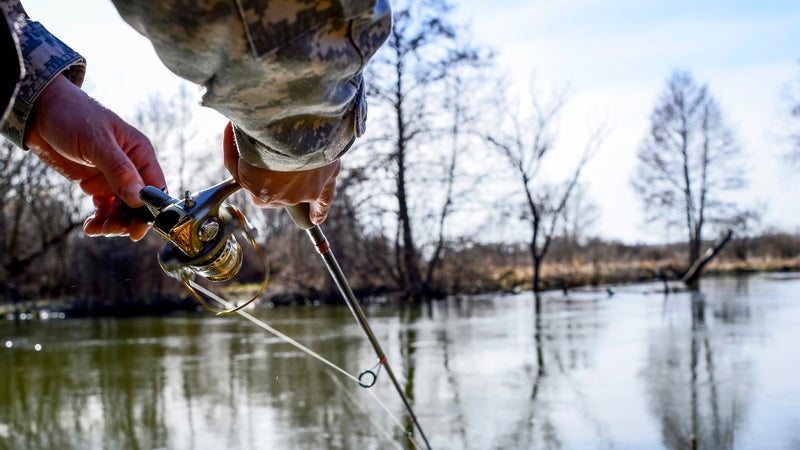
The Rod and Reel
A spinning reel and rod combo��is��your best bet as a beginner. “Combo” is the key word here—it signals that the reel and rod are sold together, which usually means they’re easier to set up. Here’s a great video below that outlines the basic parts of a spinning reel. An employee at your local tackle shop will be able to point you in the right direction in terms of a good beginner rod that will meet your particular needs.
Lures and Bait
Lures and bait will be your next step after a rod and reel. Live worms or PowerBait—a scented puttylike material that you form around a bare hook—are good starting points, while lures, which are decoys designed to attract a fish’s attention, are another effective option once you get comfortable using bait. You’ll also need some bobbers, which are small floating balls that sink or bob when something hits your lure, indicating you have a fish on. A rubber net (which is easier on a fish’s skin than string or nylon nets), needle-nose pliers to retrieve lures from the inside of the fish’s mouth, and a small tackle box to keep all of your lures and bait in one place is also helpful.
Like any outdoor pursuit, your fishing needs will only continue to expand as you gain more experience; you’ll likely want to upgrade your gear after a few months, while waders and boots could also be added to your kit down the road.
Useful Skills
Tying Knots
Below are a few basic knots you’ll need to know to get started. As your fishing skills advance, a will be a good resource to have on hand.
The Clinch Knot
The most important knot in fishing is the improved clinch knot. This knot attaches your hook or lure to your line. Once you’ve nailed this one, you’ll be ready to go.
The Palomar Knot
This knot is another option to connect your hook to your line. It’s��known for its strength and ease of tying.
The Double Surgeon’s Knot
A double surgeon’s knot is used to connect two pieces of line. This could be used if you get snagged—when��your lure gets caught on a log or rock and the line breaks—and need to fashion more line before attaching your hook.
How to Read Water
It’s helpful to know where fish may be hiding so you can target them better—in other words, “reading the water.” In lakes, fish usually hang out in or around weeds and downed trees close to shore. They might also congregate near drop-offs; for this reason, some lakes are easier to fish if you have access to a canoe or kayak. Similar tactics apply to rivers, where you’ll want to look for places that may provide good cover—logjams or overhanging banks, for example—since a fish’s main objective beyond finding food is hiding from predators.
Catching Your First Fish
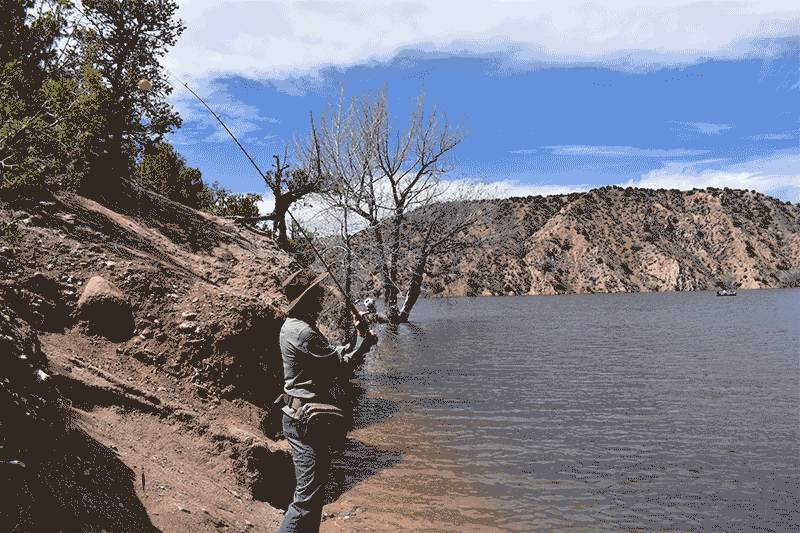
Casting
Casting with a spinning reel is as simple and intuitive as winding up and chucking your lure as far as you can, like throwing a baseball. Start with about six inches of line out the end of your rod, with��the reel below your dominant hand. A spinning reel employs a bail (a thin wire arm) to keep your line from coming out of the spool. In order to cast, you’ll need to flip this bail, hold the line with your finger, bring the rod tip up and slightly behind you (think of the motion you’d use to pick up a phone), and cast forward using your wrist and elbow. When your rod is vertical or just slightly forward from vertical, release the line to send your lure flying. Once your lure is in the water, flip the bail back over and begin reeling.
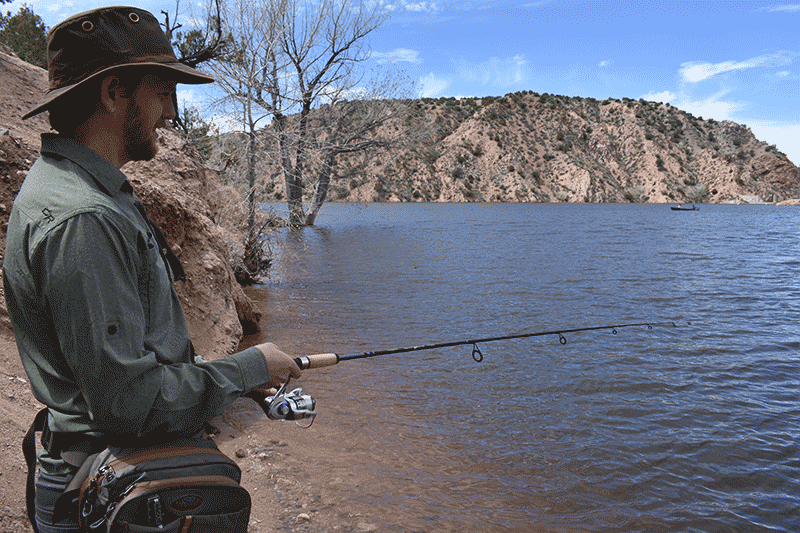
Hooking
When hooking a fish, there are two things you want to prevent: the fish “spitting” out your lure, or your line breaking under the weight and power of the fish.
To keep��those two things from happening, you’ll need to properly “set” the hook into the fish’s mouth once it has bitten your lure or bait. This means setting it at the right time and with the right pressure: when you see your bobber sink or jerk, point your rod tip up and pull back with moderate pressure to keep the lure in the fish’s mouth without ripping any part of its lip—good timing here will ensure the lure is firmly set in the lip��rather than deeper in the mouth. Once you have a proper hookset, you’ll need to focus on keeping your rod tip up while “playing” the fish—allowing the fish to tire itself out while you try to keep it on your line. Cranking the fish in immediately after hooking it will often result in it breaking off,��as the fish’s power and weight can often be greater than the strength of the line. By tiring it out, you’ll have the upper hand and eventually be able to reel the fish in.
A few additional tips:��always keep your “slack” in (that is, make sure your line is taut), and familiarize yourself with your reel’s drag system. All rods have a drag dial that affects how your reel will handle fish of different sizes and strengths—less drag is needed if you expect to catch small fish, while more drag (and a bigger reel) may be necessary if you’re chasing larger or stronger species.
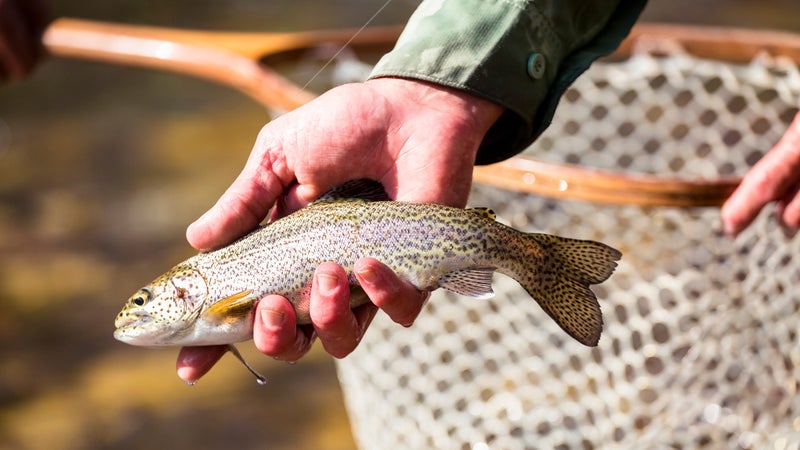
Landing
You’ve successfully hooked, played,��and reeled in the fish, and now it’s close to shore. A net will give you a huge advantage here.��Once you reel the fish into an arm’s length of your feet, use the net to scoop it up, being sure to avoid letting it flop on the bank or rocks. To further minimize harm after landing a fish, do not squeeze its stomach or touch its gills when handling, and try not to keep it out of the water longer than you can hold your breath, if you intend to release it back.
Other Valuable Resources
To keep improving your fishing skill set, it helps to do some research and get out on the water with more experienced anglers. Here are some other resources that will help you advance:
Hire a Fishing Guide
Hiring a guide once you feel more comfortable fishing will dramatically aid your progression. Guides have a comprehensive knowledge of local rivers and lakes and can also give you a more localized lesson in reading the water, lure selection, and finding new areas to fish.
Scope Out Local Clinics and Groups
Local fishing organizations or even your state’s forestry department are also excellent resources. Local organizations��often provide fishing clinics, while most states hold fishing derbies, free fishing days (no license needed), and other events that will help you link up with local anglers.
Study Up on YouTube
YouTube will be your best friend as a beginner. Whether you’re learning to tie knots, cast, or assemble your rod, watching a five-minute video is often the quickest and most effective way to pick up new information.
While it can be intimidating at first, fishing can be��one of the simplest outdoor hobbies to pick up. Catching your first fish is as easy as finding a lake, doing some research, investing in some basic gear, and casting a line.


